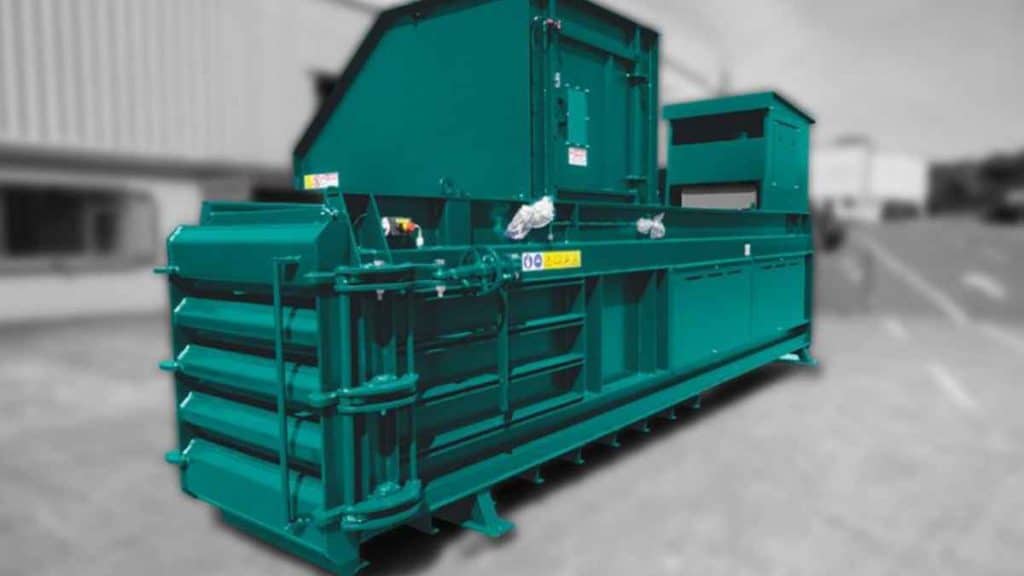With the ever-increasing amount of waste produced by businesses and households, it is more important than ever to find ways to reduce and reuse our resources. One way to do this is by investing in vertical cardboard balers. A vertical cardboard baler is a type of machine that compresses large amounts of cardboard into tightly bound bales for easier transportation, storage, and recycling. By using a vertical baler, you can drastically reduce the amount of waste generated from your business or home while also increasing efficiency in your operation. The baled cardboard takes up much less space than loose material would, meaning that more can be stored in less space and requires fewer trips for disposal. Additionally, it can help you save on labor costs as fewer people are needed to load and unload the bales. With a vertical cardboard baler, you can not only reduce waste but also increase efficiency while doing so – making it an invaluable addition to any business or home looking to create a greener environment!
The Advantages of Using a Vertical Cardboard Baler
Vertical cardboard balers are an efficient and cost-effective way to manage large amounts of cardboard waste. They can be used in a variety of settings, from warehouses and factories to retail stores and offices. The main advantage of using a vertical baler is that it takes up less space than horizontal balers, making them ideal for businesses with limited floor space. Additionally, they are easier to operate than horizontal balers since they require less manual labor. Vertical balers also produce denser bales than their horizontal counterparts, which makes them more cost-efficient when it comes to shipping costs. Furthermore, vertical balers can process larger volumes of material at once compared to horizontal models, allowing businesses to save time and money by reducing the number of bales produced per day. Finally, vertical balers are much safer than horizontal models since they don’t require workers to lift heavy materials or use dangerous machinery.
Tips for Properly Operating a Vertical Cardboard Baler
Operating a vertical cardboard baler is not as difficult as it may seem. However, there are some important safety tips to keep in mind when using this type of equipment. First and foremost, always wear the proper protective gear such as gloves, goggles, and a hard hat. Additionally, make sure that all guards and shields are in place before operating the baler. It is also important to inspect the machine for any signs of damage or wear before use. When loading material into the baler, be sure to evenly distribute it across the entire chamber so that it compacts properly. Once you have loaded your material into the chamber, press down on the handle firmly but slowly until you hear a click indicating that it has been securely locked in place. Finally, once you have finished compacting your material, turn off the power switch and unplug the machine from its power source before attempting to remove any bales from inside. Following these steps will ensure safe operation of your vertical cardboard baler every time!
The Benefits of Recycling with a Vertical Cardboard Baler
Recycling with a vertical cardboard baler is an efficient and cost-effective way to reduce waste. It can help businesses save money by reducing the amount of space needed for storage, as well as the costs associated with disposing of large amounts of cardboard. Additionally, it can help businesses meet their sustainability goals by reducing their carbon footprint and helping them become more eco-friendly. Vertical balers are also easy to use and require minimal maintenance, making them ideal for busy workplaces. Furthermore, they are designed to be safe and secure, ensuring that employees remain safe while using them. Finally, recycling with a vertical cardboard baler helps businesses save time by quickly compressing large amounts of cardboard into smaller bales that are easier to transport and store.
In conclusion, a vertical cardboard baler is an effective tool for reducing waste and increasing efficiency in any workplace environment. It allows for easy organization of recyclable materials and can help to reduce labor costs associated with manual waste disposal.
